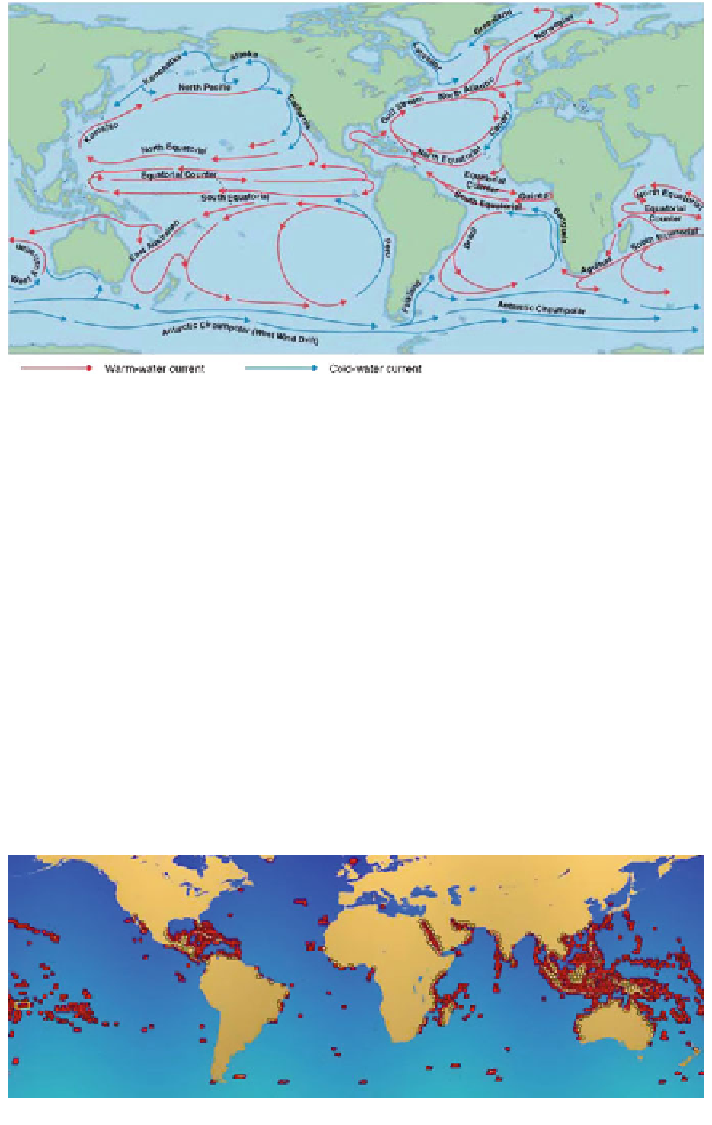Geoscience Reference
In-Depth Information
Fig. 4.15 The map of global currents in the World Ocean (
http://en.wikipedia.org
)
production is harvested. The Peruvian upwelling is a 300
300 mile area adjacent
to the coast and is the most biologically productive coastal upwelling system on
Earth. Carbon levels (an indicator of production) are tens of times higher than those
of the next most productive upwelling region, the California current.
High productivity is observed in ecosystems located in zones of coral reefs
(Fig.
4.16
). Coral reef ecosystems contain distinct zones that represent different kinds
of habitats. Usually, three major zones are recognized: the fore reef, reef crest, and
the back reef (frequently referred to as the reef lagoon). All three zones are physically
and ecologically interconnected. Reef life and oceanic processes create opportunities
for exchange of seawater, sediments, nutrients, and marine life among one another.
Let us consider the ocean ecosystem in the zone of upwelling proceeding from
the concept of the successive development of community from the moment of its
formation in the region of the deep waters lifting to the climax state in the oligo-
trophic region of convergence, and derive a model of the upwelling ecosystem
×
Fig. 4.16 Global distribution of coral reefs (
http://en.wikipedia.org
)

Search WWH ::

Custom Search